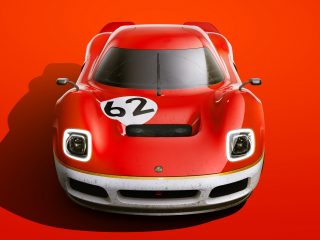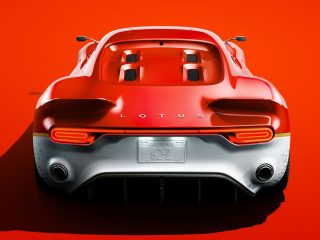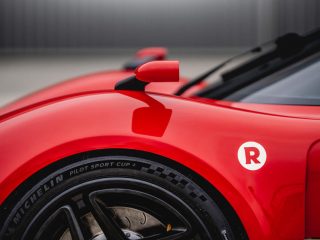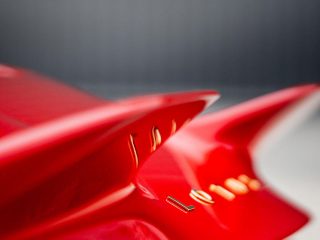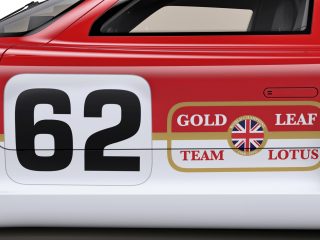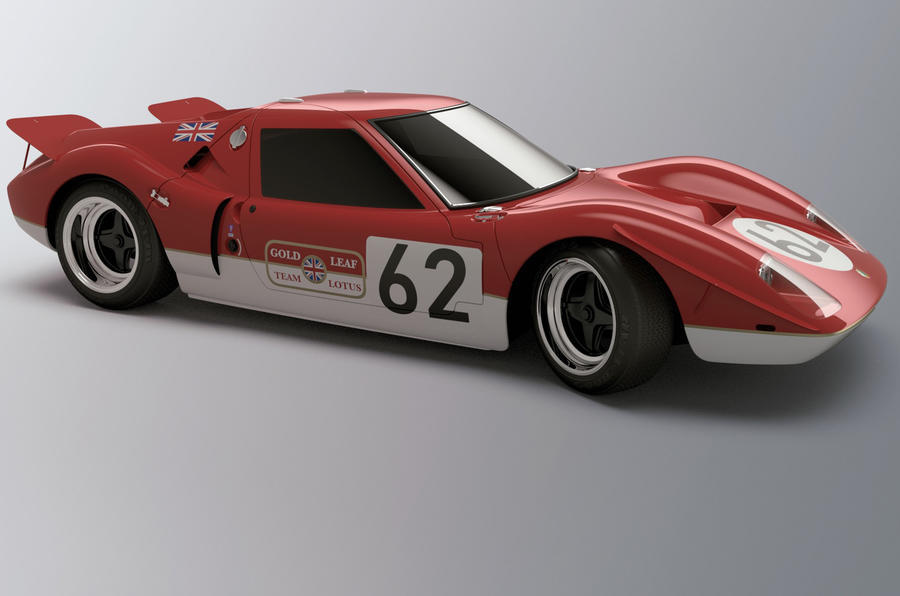
This is the new Radford Type 62-2.
It’s a reimagined version of the 1969 Lotus Type 62 racer, which uses the same supercharged 3.5-litre V6 engine as the Lotus Exige. It’s also the first new car from Radford in more than half a century, after the coachbuilding firm was revived by Jenson Button, TV personality Ant Anstead and designer Mark Stubbs.
Production starts this year and just 62 will be built. Each one will be customised to the owner’s tastes – and the company claims it provides so much scope for personalisation, that every car will be unique.
Radford offers three starting specifications, which extract gradually increasing levels of performance from the sports car’s V6 engine. The entry-level Classic variant is designated as the purists option, and comes with 320kW and a six-speed manual gearbox.
The Type 62-2 Gold Leaf wears the same iconic red-and-white livery as Graham Hill’s 1968 Lotus Type 49B Formula One racer. To back up the racy looks, it also gets a more potent 375kW version of the Lotus V6, which is backed up by a seven-speed dual-clutch gearbox.
In the near future Radford will also launch a ‘JPS’ version of the Type 62-2, which produces 450kW. Like the Gold Leaf, the JPS will also use a seven-speed double-clutch automatic gearbox. The JPS will almost certainly wear the same black-and-gold John Player Special livery that featured on Emmerson Fittipaldi’s championship-winning Lotus Type 72D F1 car, as Radford recently secured the rights to the artwork.
New Radford Type 62-2: chassis and setup
The Type 62-2 uses a Lotus chassis, although Radford has made a few changes to suit both the car’s styling and increased performance. Using the same bonded aluminium chassis as the Lotus Elise and Exige, the new body on top is made from carbon fibre composites. The cabin is supported by a new carbon fibre crash structure which incorporates a roll-over hoop and strengthening for the firewall and windscreen.
All of this lightweight engineering means the Type 62-2 tips the scales at around 1,000kg – meaning even the least powerful model has a good enough power-to-weight ratio to keep up with the current crop of supercars.
There’s also a custom made tubular rear subframe, which Radford says improves the car’s rigidity and cornering performance. However, it serves an aesthetic purpose too, as it’s visible from certain angles when viewing the car from the rear.
The Type 62-2’s underside is completely flat, and is designed to channel air towards the rear diffuser to generate downforce. That means the Classic variant can get away without using a spoiler, while the faster versions need only a pair of small ducktails.
The chassis setup also differs slightly between each model. The Classic variant comes with staggered forged alloy wheels measuring 17 inches up front and 18 inches at the rear. The car also sits on adjustable coilover suspension and Michelin Pilot Sport Cup 2 tyres. Braking is handled by a set of four-pot AP racing calipers and iron discs, while the rear end is kept in check by a unique electronic stability programme designed by Bosch.
The 375kW Gold Leaf variant gets lighter two-piece forged aluminium wheels, which are an inch larger in diameter on each axle, along with a motorsport-derived traction control and ABS system which has been calibrated with the help of Jenson Button. To cope with the extra boost, the Gold Leaf’s engine also gets a few upgrades, such as stronger con-rods, new pistons, more aggressive camshafts and a remapped ECU. Every version also comes with a titanium exhaust system.
The 450kW JPS model will have the same chassis setup as the Gold Leaf, but with even lighter carbon composite wheels, monobloc calipers and carbon ceramic brake discs. There’ll also be a larger rear diffuser and front splitter to generate more downforce.
New Radford Type 62-2: design and interior
For a modern recreation, there’s plenty of similarities between Radford’s Type 62-2 and the original Lotus racer, including in dimensions – it stands just 1,133mm tall. In profile the car looks near-identical to the Lotus original, right down to the doors which are both high-waisted and cut into the roof panel.
The sports car’s LED headlights have been designed to look like the classic Lotus, although Radford has added a modern touch at the rear with a connecting LED bar between the two clusters.
Radford is also adamant that its clients will be able to use the Type 62-2 every day. Buyers can spec an optional nose lift system to allow the car to get over speed bumps, along with a custom luggage set from Mason and Sons, which slots under the front clamshell.
The cabin isn’t completely devoid of creature comforts, either. There’s a five-speaker stereo, a digital rear-view camera and a six-inch digital instrument cluster, which has a data logger and configurable displays for driving on the street or the track.
Radford will work with each customer on the design of their car, allowing them to pick upholstery finishes, paint colours and even make physical changes to the car’s bodywork with bolt-on aerodynamic components. The bespoke nature of each vehicle means that there is no publicly available price tag.
Luke Wilkinson




